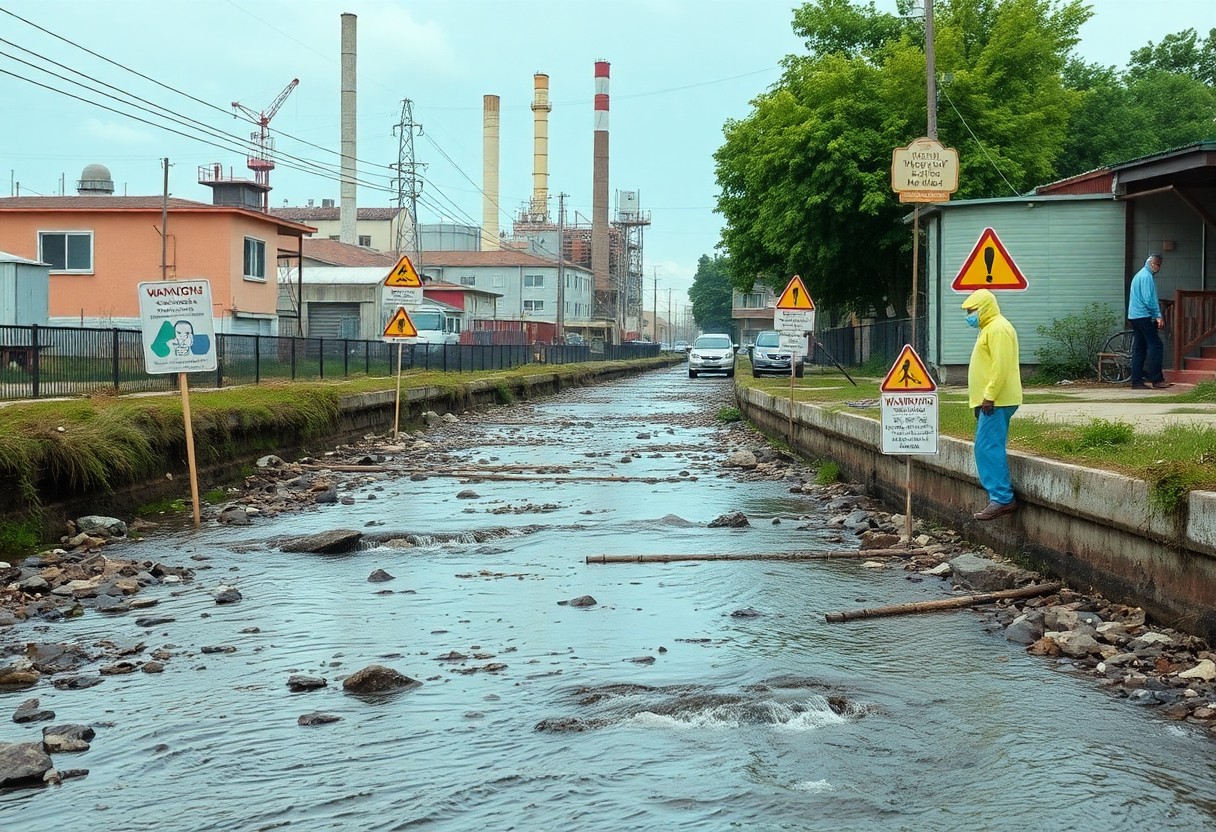PFAS, or per- and polyfluoroalkyl substances, are often dubbed “forever chemicals” due to their persistence in the environment and your body. Communities across the nation are increasingly alarmed by the serious health risks linked to PFAS exposure, including cancer, liver damage, and immune system interference. As awareness grows, you may find yourself impacted by contaminated water sources or consumer products, driving calls for improved regulations to protect public health. It’s time to explore why these demands are intensifying and how they can lead to a better and safer future for you and your community.
Understanding PFAS
A growing number of communities across the United States are becoming aware of the pervasive chemical compounds known as PFAS (per- and polyfluoroalkyl substances). These man-made chemicals, often referred to as “forever chemicals,” are persistent in the environment and have been linked to various health concerns. As awareness increases, so does the demand for stronger regulations to protect public health and the environment.
What are PFAS?
With their unique water- and grease-resistant properties, PFAS have been utilized in numerous products such as non-stick cookware, waterproof clothing, and food packaging. However, their stability in the environment means they can accumulate over time, leading to widespread contamination in soil, water, and living organisms.
Health Risks Associated with PFAS
An increasing body of research indicates that exposure to PFAS can lead to serious health risks. Studies have shown that these chemicals may disrupt your hormonal systems, impair immune function, and increase the risk of certain cancers.
This growing concern about PFAS stems from evidence showing that prolonged exposure can lead to severe health issues, including liver damage, low birth weights, and increased cholesterol levels. The endocrine-disrupting properties of PFAS can also impact your hormonal balance, leading to complications in reproductive health and metabolic disorders. As a result, countless communities are advocating for stronger regulations to mitigate these risks, as the health of future generations hangs in the balance.

Historical Context of PFAS Regulations
You may not realize that the regulation of PFAS (per- and polyfluoroalkyl substances) has evolved significantly over the past few decades. Initiated in the 1970s, public awareness regarding the environmental and health impacts of these chemicals has led to growing calls for stricter regulations. As the understanding of the potential dangers associated with PFAS compounds has increased, so too has the push from communities nationwide for stronger protective measures.
Evolution of PFAS Standards
Standards surrounding PFAS have changed in response to emerging scientific evidence. Initially, there were minimal regulations in place, but numerous studies revealing the adverse health effects of PFAS exposure, such as cancer and immune system disruptions, prompted agencies to adopt lower limits in water safety guidelines. Over time, more comprehensive frameworks for managing PFAS have been developed.
Case Studies of PFAS Contamination
About 50 communities across the United States have faced severe PFAS contamination, highlighting the urgent need for regulatory action. Examples include:
- Hinkley, California: The site of Wells contamination due to PG&E, with over 300,000 people exposed.
- Parkersburg, West Virginia: DuPont’s emissions led to elevated blood levels in 70,000 residents.
- North Carolina’s Cape Fear River: Thousands of households affected due to Chemours’ discharges, with local water exceeding 140 ppt.
And utilizing these case studies, you can see the widespread impact of PFAS contamination, which has led to increased public health concerns. The Hinkley case alone shows the potential risks of over 300,000 people being exposed to harmful levels of PFAS, while the situation in Parkersburg demonstrates how 70,000 residents were affected due to corporate negligence. As communities advocate for stronger regulations, the data continues to underscore the need for immediate action to address and mitigate these serious environmental threats.
Current State of PFAS in Communities
One of the most pressing issues facing communities today is the pervasive presence of PFAS, or per- and polyfluoroalkyl substances, in water supplies, soil, and air. These synthetic chemicals, often referred to as “forever chemicals,” do not break down naturally, leading to significant environmental and health concerns. Public awareness about the potential health risks associated with PFAS exposure has led to increased agitation for stronger regulations across the country.
Nationwide PFAS Contamination Reports
About 43 states have reported contaminated drinking water due to PFAS, impacting millions of people. Recent studies suggest that even low levels of exposure can lead to serious health issues, including cancers, liver damage, and immune system dysfunction. The alarming data indicates that the problem is widespread and not localized, further emphasizing the urgent need for comprehensive regulatory action.
Local Responses and Community Mobilization
Mobilization efforts across communities have sparked significant grassroots movements aimed at demanding accountability and change from local and state governments. These initiatives often include town hall meetings, public protests, and collaboration with environmental organizations, amplifying your voice in the quest for more stringent PFAS regulations.
To tackle PFAS contamination effectively, communities are proactively seeking solutions and demanding action from policymakers. Local groups often collaborate with environmental nonprofits to hold educational workshops, ensuring you are informed about the risks and actions that can be taken. Through organized efforts, such as petitions and advocacy campaigns, you are part of a larger movement pushing for improved testing, cleanup efforts, and stricter regulations. The combined voices of concerned citizens are proving to be a powerful force for change in the fight against PFAS pollution.
The Call for Stronger Regulations
Keep in mind that communities across the nation are uniting to advocate for tougher regulations on PFAS (per- and polyfluoroalkyl substances). These synthetic chemicals, linked to various health issues, pose significant risks to your water supply and food safety. As awareness grows, citizens are recognizing the need for legislative action to protect their health and environment, urging lawmakers to prioritize public safety over corporate interests.
Key Organizations Advocating for Change
Stronger coalitions are forming as organizations such as the Environmental Working Group and Natural Resources Defense Council take the lead in advocating for stringent PFAS regulations. These groups are working tirelessly to educate the public and lobby for policy changes that will hold polluters accountable and ensure cleaner water for communities like yours. Their efforts are necessary in amplifying voices that demand action from local, state, and federal governments.
Public Opinion and Community Advocacy
Change is on the horizon as public opinion shifts in favor of stronger PFAS regulations. Your awareness and voice play a vital role in this movement, as communities rally together to demand accountability. Grassroots campaigns and local initiatives are gaining traction, reflecting a growing concern about the potential long-term impacts of PFAS contamination on health and the environment.
Consequently, community members are taking action by organizing town hall meetings, participating in petitions, and seeking to educate their neighbors about the dangers of PFAS exposure. This collective effort not only raises awareness of the pollutants in your local water supplies but also empowers you to advocate for meaningful reforms. As more individuals recognize the risks associated with PFAS, community advocacy aims to push policymakers toward swift and decisive action to safeguard public health and promote environmental justice.
Legislative Efforts and Challenges
For many communities, the push for stronger PFAS regulations reflects a growing awareness of the toxic implications associated with these substances. However, the path toward effective legislation is often obstructed by competing interests and bureaucratic hurdles that can stall or dilute proposed measures. You may find that both state and federal legislators face a challenging landscape as they attempt to prioritize public health over industrial profit.
Recent Legislative Measures
Legislative initiatives aimed at regulating PFAS have recently gained momentum, with various states introducing bills that seek to limit the use and release of these harmful chemicals. These measures often include setting stricter limits on PFAS levels in drinking water and mandating testing in communities disproportionately affected. You may see these policies as a hopeful step toward safeguarding public health, driven by advocacy from affected residents.
Opposition to Stricter Regulations
Opposition to stricter regulations often stems from various industries that rely on PFAS for products and manufacturing processes. You may notice that these opponents argue that proposed regulations could lead to job losses and increased production costs, creating resistance to legislative efforts. They emphasize that potential economic impacts should be considered when creating regulations.
Recent claims from industry representatives highlight concerns about the potential for significant economic repercussions if stricter regulations are enacted. They argue that unrealistic timelines and high compliance costs would disrupt operations, jeopardizing many jobs. You should be aware that while economic factors are important, they must be weighed against the serious health risks posed by PFAS, as community advocates emphasize the need for a balanced approach that prioritizes safety while considering economic implications.
Future Implications of PFAS Regulation
Now, as communities push for stronger PFAS regulations, the implications extend beyond immediate safety issues. These regulations could shape future water quality standards, public health policies, and environmental restoration efforts. Through proactive measures, you can help ensure that future generations are protected from the harmful effects of PFAS, leading to safer environments and healthier communities.
Potential Health Benefits
Against the backdrop of rising health concerns linked to PFAS exposure, stronger regulations could significantly mitigate health risks associated with these chemicals. By limiting your exposure, you may experience reduced instances of severe health outcomes, such as cancer and liver damage, leading to a healthier community overall.
Economic and Environmental Considerations
Any robust regulation of PFAS could have profound economic and environmental impacts. You may find that improved water quality leads to reduced healthcare costs and enhances overall community well-being, while also stabilizing property values as water safety increases.
Understanding the broader context, effective PFAS regulations can lead to significant savings in healthcare costs by reducing the prevalence of PFAS-related illnesses. Environmental cleanup efforts will be more focused, leading to improved ecosystem health, which ultimately supports local economies, especially in areas reliant on agriculture and tourism. The adoption of rigorous standards creates a sustainable future where community safety and economic stability go hand in hand, reflecting your values for both public health and environmental integrity.
Final Words
Now, as communities nationwide advocate for stronger PFAS regulation, you are witnessing the collective urgency to protect public health and the environment from these persistent chemicals. The rising awareness around PFAS contamination highlights the potential risks to your water supply and overall well-being. By joining the conversation and supporting stricter regulations, you can contribute to a safer future for yourself and generations to come. Your voice matters in the movement for transparency and accountability in chemical management.





















